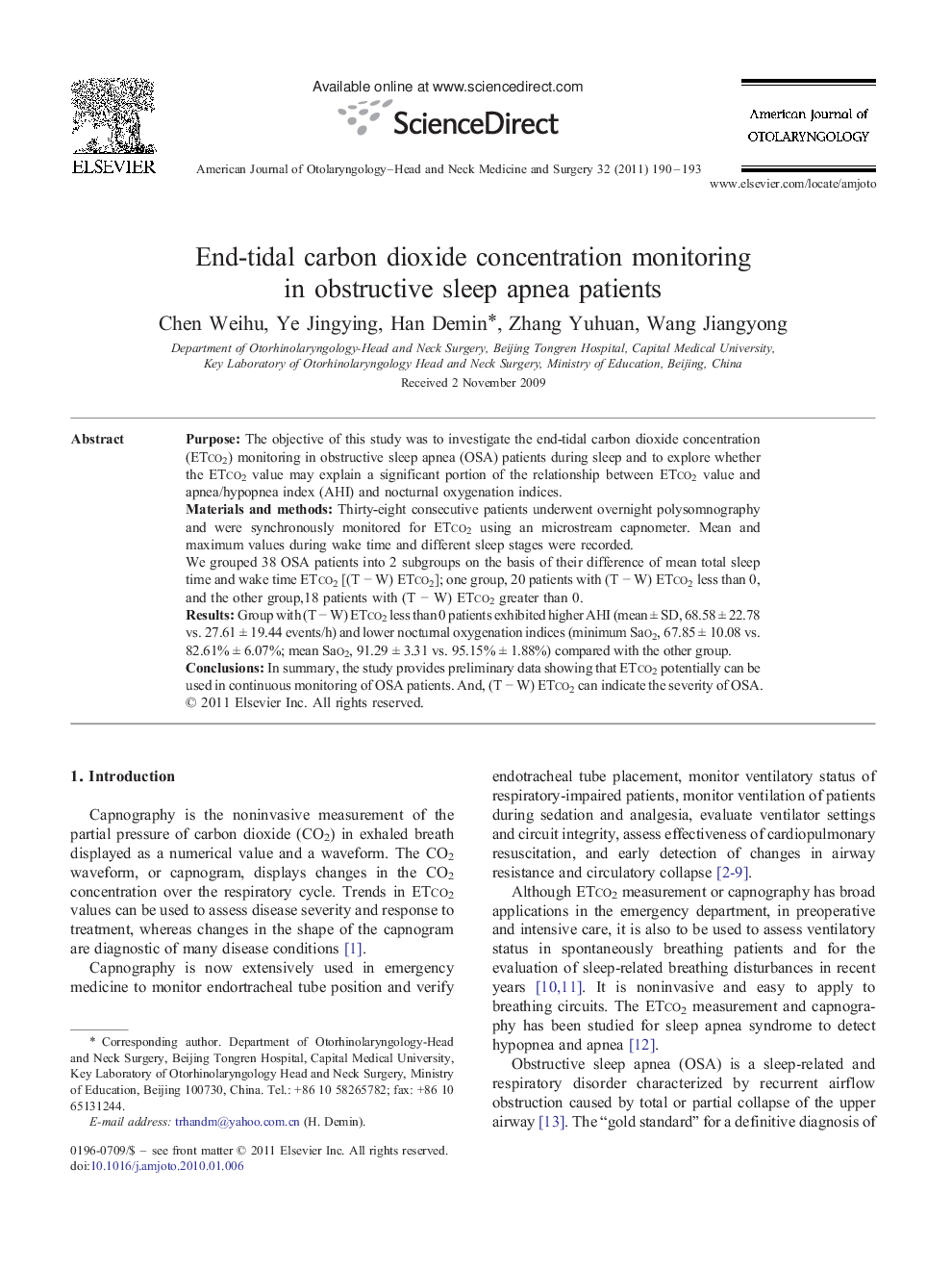| Article ID | Journal | Published Year | Pages | File Type |
|---|---|---|---|---|
| 4103573 | American Journal of Otolaryngology | 2011 | 4 Pages |
PurposeThe objective of this study was to investigate the end-tidal carbon dioxide concentration (ETco2) monitoring in obstructive sleep apnea (OSA) patients during sleep and to explore whether the ETco2 value may explain a significant portion of the relationship between ETco2 value and apnea/hypopnea index (AHI) and nocturnal oxygenation indices.Materials and methodsThirty-eight consecutive patients underwent overnight polysomnography and were synchronously monitored for ETco2 using an microstream capnometer. Mean and maximum values during wake time and different sleep stages were recorded.We grouped 38 OSA patients into 2 subgroups on the basis of their difference of mean total sleep time and wake time ETco2 [(T − W) ETco2]; one group, 20 patients with (T − W) ETco2 less than 0, and the other group,18 patients with (T − W) ETco2 greater than 0.ResultsGroup with (T − W) ETco2 less than 0 patients exhibited higher AHI (mean ± SD, 68.58 ± 22.78 vs. 27.61 ± 19.44 events/h) and lower nocturnal oxygenation indices (minimum Sao2, 67.85 ± 10.08 vs. 82.61% ± 6.07%; mean Sao2, 91.29 ± 3.31 vs. 95.15% ± 1.88%) compared with the other group.ConclusionsIn summary, the study provides preliminary data showing that ETco2 potentially can be used in continuous monitoring of OSA patients. And, (T − W) ETco2 can indicate the severity of OSA.
